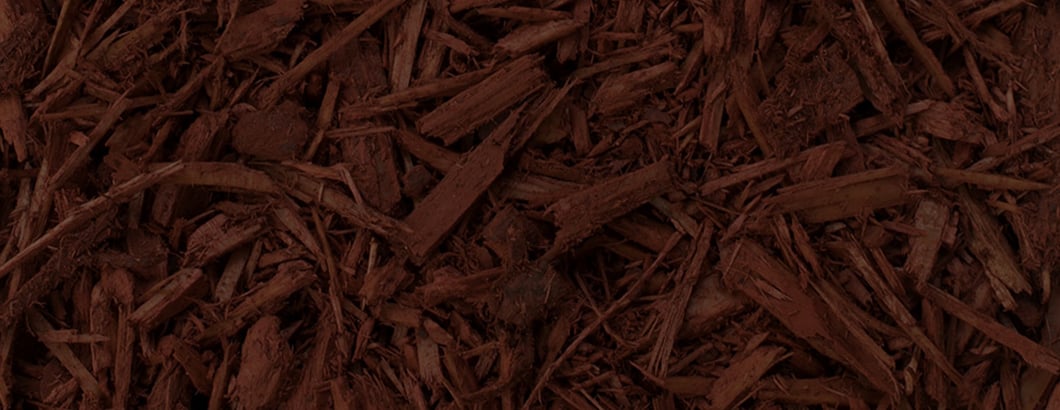
Mulch Myths: Busted
It is not a myth that not everyone has a green thumb. But more than that, there are many common practices among gardeners and landscapers that are, frankly, not helpful or healthy for plants, soil, or trees. In this article, we will address some common misconceptions, or mulch myths, that have led new and veteran gardeners astray in the past. After reading this, you will be equipped to mulch like a professional even if you are a DIYer! Let’s dig in.
The Biggest Mulch Myths
Myth: Trees Like Mulch Volcanoes.
It’s very likely that you have seen a mulch volcano around your neighborhood. Landscapers create these mounds of mulch around the bases of trees in an attempt to protect them from harsh weather, keep newly planted trees’ roots intact, or just as an aesthetically pleasing element. However, mulch volcanoes are actually harmful to trees. Mulch traps moisture, that is why it is a great insulator for soil, but in this case, it creates too much moisture. When the base of a tree can’t “breathe,” it suffers.
Tree trunks already have a built-in protection system: bark. Tree bark keeps the inner trunk and lifeblood of the tree safe from insects and diseases. It also keeps the right amount of moisture in. But when mulch is piled 8-12” high at the base of the trunk, an unnecessary amount of moisture is present which causes the tree bark to begin to rot. We don’t need to tell you that tree rot is never a good thing.
Truth: Mulch is a good thing to maintain soil moisture. Tree trunks do not need to be mulched. Instead of creating a mulch volcano, gardeners and landscapers should lay mulch out in a ring around the base of the tree, leaving space between the trunk and the mulch, as seen below.
Myth: Mulch Attracts Termites.
It is a common misconception that because mulch creates a damp environment it also attracts termites. It is true that insects will frequent dark, damp spaces, but this is good for your soil. This does not mean that termites are infesting your mulch beds and it certainly does not mean that your home is at risk.
There are some techniques you can practice to help you avoid a termite disaster. One thing you can do is to keep mulch beds about six inches from the base of your house foundation, leaving a strip of bare, dry dirt in between. This way you will not create moisture at your home’s foundation where termites could find a way in. Also make sure that no sprinklers in your yard are watering your house siding, as this can also create unnecessary moisture.
Truth: Mulch will not increase your chances of getting termites in your home. With proper maintenance of mulch and termite prevention, you can have the garden you’re dreaming of without endangering your house.
Myth: Mulch Makes Pets Sick.
This is an important one. Pets, especially dogs, are notorious for getting in gardens, chewing on everything, and eating things they are not supposed to. But there is only one variety of mulch that is actually harmful to your dog and that is mulch made from cocoa beans. Chocolate is poisonous for dogs and so cocoa mulch does pose a threat if it is ingested by your four-legged friend. You can keep an eye out for this by smelling for a chocolate scent in mulches or in neighboring lawns.
Not to worry, however! Gaston Mulch and Soil does not sell any mulch varieties that are dangerous for pets. Our shredded mulches, wood chips, bark mulches, shavings, and pine straw are all safe and sound.
Truth: Unless the mulch is made from cocoa beans, it is not poisonous or unsafe for pets. You can shop our mulches knowing that your dog, cat, or other furry friends will be safe no matter which mulch you choose.
Myth: The More Mulch the Merrier.
It’s an age-old sentiment that more is better, but there are many cases where this is just not true. Mulch is one of those cases. Many homeowners, gardeners, and DIYers make the mistake of throwing a ton of mulch down and spreading it around their garden bed. This might look nice, but it is actually hurting the very plants and flowers you are trying to help.
Laying mulch the proper way will help your garden beds increase the nutrients needed for plants to thrive while not suffocating them. Laying mulch at a depth of three inches is pretty standard for all mulch beds. This is the perfect depth to collect moisture at plant roots and to slowly decompose which adds important organic material back into your soil. Anything deeper than this is overkill and it opens the door for mold to begin growing. If mold does grow in your mulch you have to dispose of all the current mulch and replace it with new — a grueling job that you want to avoid.
Truth: You should not lay mulch as deep as possible. It is important to stick to a depth of two to three inches. When you do, you maximize the life of your mulch and give your garden the nutrients it needs.
Make Sure to Mulch with Gaston!
We hope now that we have debunked some core myths about mulch that you are more equipped to give your lawn and garden the care it deserves. Treat your landscape to quality materials. At Gaston Mulch and Soil, all of our mulches and materials are processed at one of our sites from recycled trees, and then bagged and sold to you with a friendly smile! We offer delivery options or you can just come by and we will load up your truck with as much product as you need for your project.
